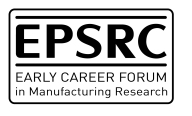Kristian Groom is a Senior Lecturer at The University of Sheffield. He attained the MPhys degree in 1999 and PhD in 2003 from the Department of Physics & Astronomy at Sheffield before joining the Department of Electronic & Electrical Engineering where he is presently based.
Since obtaining his PhD, for research into the carrier processes and dynamics in quantum dot lasers, Kristian´s research has mainly focused on the development of opto-electronic components such as lasers and superluminescent diodes and the advanced fabrication thereof. This was initially focussed towards long wavelength GaAs telecommunications applications (working within FP5 NANOMAT), but more recently to applications in biophotonics (e.g. FP6 NanoUB Sources and BB/E002676/1). His studies have also included photodetectors and solar cells as well as devices in the mid-IR, providing him with a track record in the design and manufacture of a broad range of optoelectronic components. He has co-authored over 70 papers in international journals and conference proceedings and has both led and co-investigated a number of research projects. Furthermore, Kristian has acted as co-chair of the nanophotonics symposium at Photonics Global Conference (2010,12), committee member for nanophotonic materials and devices symposium at IEEE Photonics Conference (2012,13), and was chair of UK Semiconductors conference (2009/10).
In 2005 he was awarded a Royal Academy of Engineering & EPSRC Research Fellowship for research into advanced semiconductor laser engineering. Following the conclusion of this Fellowship funding in May 2010, Kristian assumed the role of lecturer. He is now responsible for teaching modules on Compound Semiconductor Manufacture (30 credits), Reliability & Failure of Electronic Devices (10 credits), Advanced Instrumentation (20% of 10 credits) and Research Techniques (10 credits) and is MSc Projects Co-ordinator and is Admissions Tutor for the MSc in Semiconductor Photonics & Electronics.
During the research fellowship, Kristian introduced concepts for manufacturable optoelectronic components on GaAs such as buried waveguides and gratings. He is keen to extend this to form a set of robust, integratable building blocks allowing photonic integration on GaAs and new capability for rapid prototyping and multi-project wafer runs across the wavelength range 600 to 1300nm. Kristian is also keen to develop optoelectronic component capability appropriate to meet the needs of emerging manufacturing technologies, systems and processes such as those in biophotonics and in additive manufacturing.
Research funding history:
| Current EPSRC Support | ||||||||||
|
||||||||||
| Previous EPSRC Support | ||||||||||
|
||||||||||
Previous non-EPSRC support
| BB/E002676/1 | “Development of novel light sources to enable non-invasive imaging of cells in 3D tissue constructs and grafts” | (C) |
| Royal Society Research Grant “Photonic crystal surface emitting lasers” | (P) | |
| ETOE II (Extended Temperature OptoElectronics) | (C) | |
| Royal Society International Joint Project with CEIT, Spain “Holographic Lithography of Photonic Crystal Surface Emitting Lasers” | (P) | |
| Yorkshire Forward / Filtronic plc “Quantum Dot Lasers Exploiting GaAs Technology” |
(C)
Contact Dr Kristian Groom
Cohort 1 (18 months)


